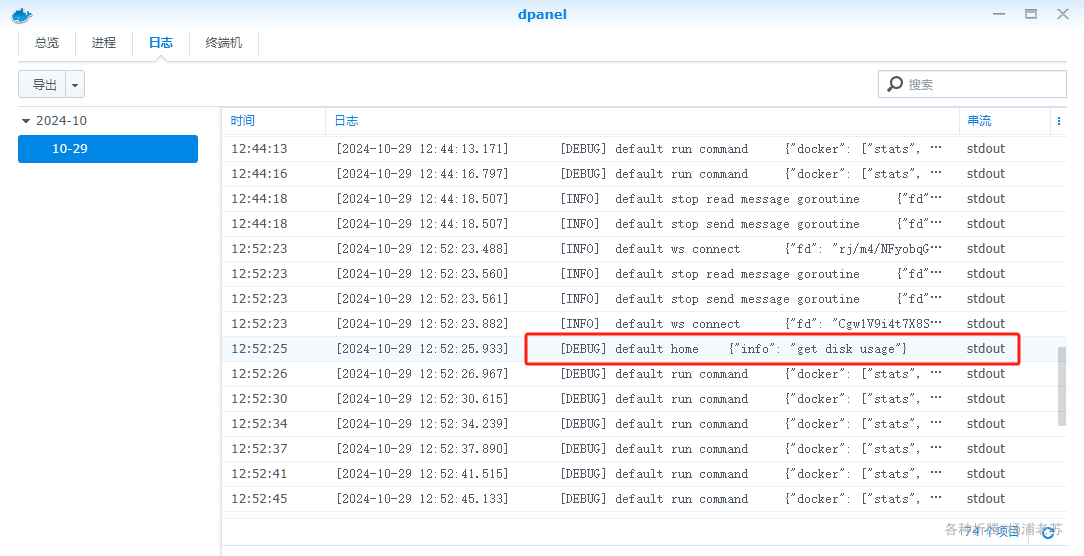1.ES6是什么
ES6,全称是ECMAScript 6,是JavaScript语言的下一代标准,由ECMA国际组织在2015年6月正式发布。ES6也被称作ECMAScript 2015,从这个版本开始,ECMA组织决定每年发布一个新的ECMAScript版本,以使JavaScript语言能够持续发展和进化。
ES6引入了许多新特性,这些特性旨在提高JavaScript语言的编程效率、代码的可读性和可维护性。以下是一些ES6中的重要特性:
-
箭头函数(Arrow functions):提供了一种更简洁的函数书写方式。
const sum = (a, b) => a + b; -
类(Classes):引入了类的概念,尽管JavaScript仍然是基于原型的,但类的语法更接近传统的面向对象语言。
class Animal { constructor(name) { this.name = name; } speak() { console.log(`${this.name} makes a noise.`); } } -
模块化(Modules):通过
import和export关键字,支持模块的导入和导出,使得代码组织更加清晰。// 导出 export const myFunction = () => {}; // 导入 import { myFunction } from './myModule'; -
模板字符串(Template literals):允许使用反引号(`)创建字符串,并提供字符串插值功能。
const message = `Hello, ${name}!`; -
解构赋值(Destructuring assignment):允许从数组或对象中提取数据,并赋值给变量。
const [a, b] = [1, 2]; const { x, y } = { x: 1, y: 2 }; -
let和const:引入了
let和const关键字用于声明变量,解决了var的一些问题,如变量提升和作用域问题。 -
Promise:用于更优雅地处理异步操作,替代了传统的回调函数模式。
-
默认参数(Default parameters):允许在函数定义时为参数设置默认值。
-
展开运算符(Spread operator):允许在函数调用或数组字面量中展开数组或对象。
-
Set和Map:引入了新的数据结构Set和Map,提供了更丰富的集合操作。
ES6的这些新特性极大地推动了JavaScript的发展,使得这门语言更适合大型应用的开发,并且更加现代化和高效。随着现代浏览器的支持,ES6已经成为现代前端开发的标配。
ES与JavaScript的关系

2.let和const的简介
在JavaScript中,let、var 和 const 都是用来声明变量的关键字,但它们之间有几个关键的区别:


<!DOCTYPE html>
<html lang="en">
<head>
<meta charset="UTF-8" />
<meta name="viewport" content="width=device-width, initial-scale=1.0" />
<meta http-equiv="X-UA-Compatible" content="ie=edge" />
<title>let、const 与 var 的区别</title>
</head>
<body>
<script>
// 1.重复声明
// 已经存在的变量或常量,又声明了一遍
// var 允许重复声明,let、const 不允许
// let a = 1;
// // ...
// let a = 2;
// console.log(a);
// function func(a) {
// let a = 1;
// }
// func();
// 2.变量提升
// var 会提升变量的声明到当前作用域的顶部
// console.log(a);
// console.log(a);
// var a = 1;
// 相当于
// var a;
// console.log(a);
// a = 1;
// console.log(a);
// let、const 不存在变量提升
// console.log(a);
// let a = 1;
// 养成良好的编程习惯,对于所有的变量或常量,做到先声明,后使用
// 3.暂时性死区
// 只要作用域内存在 let、const,它们所声明的变量或常量就自动“绑定”这个区域,不再受到外部作用域的影响
// let、const 存在暂时性死区
// let a = 2;
// let b = 1;
// function func() {
// console.log(b);
// // console.log(a);
// // let a = 1;
// }
// func();
// 养成良好的编程习惯,对于所有的变量或常量,做到先声明,后使用
// 4.window 对象的属性和方法
// 全局作用域中,var 声明的变量,通过 function 声明的函数,会自动变成 window 对象的属性或方法
// let、const 不会
// var/function
// var age = 18;
// function add() {}
// console.log(window.age);
// console.log(window.add === add);
// let/const
// let age = 18;
// const add = function () {};
// console.log(window.age);
// console.log(window.add === add);
// 5.块级作用域
</script>
</body>
</html>
<!DOCTYPE html>
<html lang="en">
<head>
<meta charset="UTF-8" />
<meta name="viewport" content="width=device-width, initial-scale=1.0" />
<meta http-equiv="X-UA-Compatible" content="ie=edge" />
<title>let、const 与 var 的区别</title>
</head>
<body>
<script>
// 块级作用域
// 1.什么是块级作用域
// var 没有块级作用域
// for (var i = 0; i < 3; i++) {
// // console.log(i);
// }
// console.log(i);
// let/const 有块级作用域
// for (let i = 0; i < 3; i++) {
// // i = i+1
// // console.log(i);
// }
// console.log(i);
// 2.作用域链
// function func() {
// for (let i = 0; i < 3; i++) {
// // console.log(i);
// }
// }
// func();
// console.log(i);
// 作用域链:内层作用域->外层作用域->...->全局作用域
// 3.有哪些块级作用域
// {}
// {
// let age = 18;
// // console.log(age);
// }
// console.log(age);
// {}
// for(){}
// while(){}
// do{}while()
// if(){}
// switch(){}
// function(){}
// const person = {
// getAge: function () {}
// };
</script>
</body>
</html>
1.作用域(Scope):
var 声明的变量拥有函数作用域(function scope),这意味着如果 var 变量在函数外部声明,它将是一个全局变量;如果在函数内部声明,它只能在那个函数内部被访问。
let 和 const 声明的变量拥有块作用域(block scope),这意味着它们的作用域限定在它们被声明的块(如一个花括号 {} 内部的区域)中。
2.变量提升(Hoisting):
var 声明的变量会被提升到其作用域的顶部,但在初始化之前不能使用,访问未初始化的变量会得到 undefined。
let 和 const 也会被提升,但是它们不允许在声明之前被访问,如果尝试这样做将会导致一个引用错误(ReferenceError)。
3.重复声明(Re-declaration):
在同一个作用域内,var 允许重复声明同一个变量。
let 和 const 不允许在同一个作用域内重复声明同一个变量。
4.重新赋值(Re-assignment):
使用 var 和 let 声明的变量可以被重新赋值。
使用 const 声明的变量必须在声明时初始化,并且一旦被赋值,其引用就不能再被改变。需要注意的是,const 保证的是变量引用的不可变性,而不是变量的值不可变。例如,如果 const 变量引用的是一个对象,那么对象的属性是可以被修改的。
5.window 对象的属性和方法
全局作用域中,var 声明的变量,通过 function 声明的函数,会自动变成 window 对象的属性或方法。let、const 不会
// 2.2.const 声明的常量,允许在不重新赋值的情况下修改它的值
// 基本数据类型
// const sex = 'male';
// sex = 'female'; //会报错
// 引用数据类型
// const person = { username: 'Alex' };
// // person = {};
// person.username = 'ZhangSan'; //通过.直接修改值,而不是复制操作,是可以的。
// console.log(person);
不知道用什么的时候先用const,也就是说不确定需求的时候用const,因为如果需要修改会报错,方便查找。
<!DOCTYPE html>
<html lang="en">
<head>
<meta charset="UTF-8" />
<meta name="viewport" content="width=device-width, initial-scale=1.0" />
<meta http-equiv="X-UA-Compatible" content="ie=edge" />
<title>const</title>
</head>
<body>
<script>
// 1.为什么需要 const
// let
// let sex = 'male';
// // ...
// sex = 'female';
// console.log(sex);
// const
// const sex = 'male';
// // ...
// sex = 'female';
// console.log(sex);
// const 就是为了那些一旦初始化就不希望重新赋值的情况设计的
// 2.const 的注意事项
// 2.1.使用 const 声明常量,一旦声明,就必须立即初始化,不能留到以后赋值
// const sex;
// sex='male'
// const sex = 'male';
// 2.2.const 声明的常量,允许在不重新赋值的情况下修改它的值
// 基本数据类型
// const sex = 'male';
// sex = 'female';
// 引用数据类型
// const person = { username: 'Alex' };
// // person = {};
// person.username = 'ZhangSan';
// console.log(person);
// 3.什么时候用 const,什么时候用 let
// var
// for (let i = 0; i < 3; i++) {}
// const username = 'Alex';
// // ...
// username = 'ZhangSan';
</script>
</body>
</html>
以下是这些关键字的简单比较:
var 是ES5及之前版本中的标准声明方式,现在一般不推荐使用,因为它的作用域和提升行为可能会导致代码中的意外行为。
let 是ES6(ECMAScript 2015)中引入的,用于声明块作用域的变量,通常在需要重新赋值的情况下使用。
const 也是ES6中引入的,用于声明块作用域的常量,当你不希望变量的引用改变时使用。
总结来说,现代JavaScript编程中推荐尽可能使用 const,只在变量需要被重新赋值时使用 let。这样做可以提高代码的可读性和可维护性。
3.模版字符串
(1)是什么
模板字符串(Template Literals)是ES6(ECMAScript 2015)中引入的一种新的字符串表示法,它允许开发者以更简单、更直观的方式创建和维护字符串。模板字符串使用反引号(`)而不是单引号(')或双引号(")来定义字符串。
以下是模板字符串的一些主要特点和用法:
-
多行字符串:模板字符串可以跨越多行,不需要使用反斜杠(\)来换行。
const multiLineString = `This is a string that spans multiple lines.`; -
字符串插值:可以在模板字符串中嵌入变量和表达式,这些变量和表达式会被解析并转换为字符串的一部分。插入变量或表达式时,需要使用
${expression}的语法。const name = 'Alice'; const age = 30; const greeting = `Hello, my name is ${name} and I am${age} years old.`; -
标签模板(Tagged Templates):模板字符串可以与一个函数一起使用,这种用法称为标签模板。函数的第一个参数是一个字符串数组,其余的参数对应于模板字符串中的插值表达式。
function myTag(strings, ...values) { // strings 是一个包含模板字符串中静态部分的数组 // values 是一个包含模板字符串中动态部分(即插值表达式)的数组 return strings.reduce((acc, str, i) => { return acc + str + (values[i] || ''); }, ''); } const result = myTag`Hello ${name}, how are you?`; -
原始字符串:模板字符串可以创建原始字符串,即字符串中的转义序列不会被特殊处理。这可以通过在模板字符串前加上
String.raw来实现。const rawString = String.raw`This is a raw string: \n and \t are not special characters.`;
模板字符串因其灵活性和易读性,在现代JavaScript开发中被广泛使用。它们提供了一种简洁的方式来构建包含变量和表达式的大型字符串,而无需使用字符串连接或格式化函数。
<!DOCTYPE html>
<html lang="en">
<head>
<meta charset="UTF-8" />
<title>模板字符串是什么</title>
</head>
<body>
<script>
// 1.认识模板字符串
// const username1 = 'alex';
// // "alex"
// const username2 = `alex`;
// console.log(username1, username2, username1 === username2);
// 2.模板字符串与一般字符串的区别
const person = {
username: 'Alex',
age: 18,
sex: 'male'
};
// const info =
// '我的名字是:' +
// person.username +
// ', 性别:' +
// person.sex +
// ', 今年' +
// person.age +
// '岁了';
// console.log(info);
// const info = `我的名字是:${person.username}, 性别:${person.sex}, 今年${person.age}岁了`;
// console.log(info);
// 和其他东西一起使用的时候,使用模板字符串,方便注入
// 其他情况下使用模板字符串或一般字符串都行
</script>
</body>
</html>
(2)模版字符串的注意事项
<!DOCTYPE html>
<html lang="en">
<head>
<meta charset="UTF-8" />
<title>模板字符串的注意事项</title>
</head>
<body>
<script>
// 1.输出多行字符串
// 一般字符串
// const info = '第1行\n第2行';
// console.log(info);
// 模板字符串
// const info = `第1行\n第2行`;
// const info = `第1行
// 第2行`;
// console.log(info);
// 模板字符串中,所有的空格、换行或缩进都会被保留在输出之中
// 2.输出 ` 和 \ 等特殊字符
// const info = `'\`\\`;
// console.log(info);
// 3.模板字符串的注入
// ${}
// const username = 'alex';
// const person = { age: 18, sex: 'male' };
// const getSex = function (sex) {
// return sex === 'male' ? '男' : '女';
// };
// const info = `${username}, ${person.age + 2}, ${getSex(person.sex)}`;
// console.log(info);
// 只要最终可以得出一个值的就可以通过 ${} 注入到模板字符串中
</script>
</body>
</html>
(3) 应用

<!DOCTYPE html>
<html lang="en">
<head>
<meta charset="UTF-8" />
<title>模板字符串的应用</title>
<style>
body {
padding: 50px 0 0 300px;
font-size: 22px;
}
ul {
padding: 0;
}
p {
margin-bottom: 10px;
}
</style>
</head>
<body>
<p>学生信息表</p>
<ul id="list">
<li style="list-style: none;">信息加载中……</li>
</ul>
<script>
// 数据
const students = [
{
username: 'Alex',
age: 18,
sex: 'male'
},
{
username: 'ZhangSan',
age: 28,
sex: 'male'
},
{
username: 'LiSi',
age: 20,
sex: 'female'
}
];
const list = document.getElementById('list');
let html = '';
for (let i = 0; i < students.length; i++) {
html += `<li>我的名字是:${students[i].username},${students[i].sex},${students[i].age}</li>`;
}
// console.log(html);
list.innerHTML = html;
</script>
</body>
</html>
4.箭头函数
(1)是什么
<script>
// 1.认识箭头函数
// const add = (x, y) => {
// return x + y;
// };
// console.log(add(1, 1));
// 2.箭头函数的结构
// const/let 函数名 = 参数 => 函数体
// 3.如何将一般函数改写成箭头函数
// 声明形式
// function add() {}
// 声明形式->函数表达式形式
// const add = function () {};
// 函数表达式形式->箭头函数
const add = () => {};
</script>(2)注意事项
<!DOCTYPE html>
<html lang="en">
<head>
<meta charset="UTF-8" />
<title>箭头函数的注意事项</title>
</head>
<body>
<script>
// 1.单个参数
// 单个参数可以省略圆括号
// const add = x => {
// return x + 1;
// };
// console.log(add(1));
// 无参数或多个参数不能省略圆括号
// const add = () => {
// return 1 + 1;
// };
// const add = (x, y) => {
// return x + y;
// };
// console.log(add(1, 1));
// 2.单行函数体
// 单行函数体可以同时省略 {} 和 return
// const add = (x, y) => {
// return x + y;
// };
// const add = (x, y) => x + y;
// console.log(add(1, 1));
// 多行函数体不能再化简了
// const add = (x, y) => {
// const sum = x + y;
// return sum;
// };
// 3.单行对象
// const add = (x, y) => {
// return {
// value: x + y
// };
// };
// const add = (x, y) => ({
// value: x + y
// });
// 如果箭头函数返回单行对象,可以在 {} 外面加上 (),让浏览器不再认为那是函数体的花括号
// const add = (x, y) => [x, y];
// console.log(add(1, 1));
</script>
</body>
</html>
(3)非箭头函数中this指向
在JavaScript中,this关键字的行为取决于函数的调用方式。在非箭头函数(即传统的函数表达式或函数声明)中,this的指向通常不是在函数定义时确定的,而是在函数被调用时确定的。以下是几种常见的函数调用场景及其对应的this指向:
-
作为对象的方法调用: 当一个函数作为对象的方法被调用时,
this指向该对象。const obj = { method: function() { return this; // 这里的this指向obj对象 } }; obj.method(); // 返回obj对象 -
独立函数调用: 当函数不是作为对象的方法调用时(即独立调用),在非严格模式下,
this指向全局对象(在浏览器中通常是window对象),而在严格模式下,this是undefined。function func() { return this; // 非严格模式:指向全局对象,严格模式:undefined } func(); // 非严格模式返回全局对象,严格模式抛出TypeError -
构造函数调用: 当使用
new关键字调用一个函数时,this指向新创建的对象。function Constructor() { this.prop = 'value'; // 这里的this指向新创建的对象 } const instance = new Constructor(); instance.prop; // 'value' -
使用
call、apply或bind方法调用:Function.prototype.call、Function.prototype.apply和Function.prototype.bind方法可以显式地设置函数调用时this的值。function func() { return this; } const context = { value: 'custom context' }; func.call(context); // 返回{ value: 'custom context' } func.apply(context); // 同上 const boundFunc = func.bind(context); boundFunc(); // 同上 -
作为DOM事件处理函数: 当函数作为DOM事件处理程序被调用时,
this通常指向触发事件的元素。document.getElementById('button').addEventListener('click', function() { console.log(this); // 指向button元素 });
理解this的工作原理对于编写JavaScript代码至关重要,因为它经常会导致混淆和错误。记住,this的值是在函数被调用时确定的,而不是在函数定义时。
<!DOCTYPE html>
<html lang="en">
<head>
<meta charset="UTF-8" />
<title>非箭头函数中的 this 指向</title>
</head>
<body>
<script>
// 1.全局作用域中的 this 指向
// console.log(this); // window
// 2.一般函数(非箭头函数)中的 this 指向
// 'use strict';
function add() {
console.log(this);
}
// 严格模式就指向 undefined
// add(); // undefined->window(非严格模式下)
// window.add();
// const calc = {
// add: add
// };
// // calc.add(); // calc
// const adder = calc.add;
// adder(); // undefined->window(非严格模式下)
// document.onclick = function () {
// console.log(this);
// };
// document.onclick();
// function Person(username) {
// this.username = username;
// console.log(this);
// }
// const p = new Person('Alex');
// 只有在函数调用的时候 this 指向才确定,不调用的时候,不知道指向谁
// this 指向和函数在哪儿调用没关系,只和谁在调用有关
// 没有具体调用对象的话,this 指向 undefined,在非严格模式下,转向 window
</script>
</body>
</html>
(4)箭头函数中this指向
箭头函数(Arrow Functions)在JavaScript中的this绑定规则与传统的函数表达式或函数声明不同。箭头函数不绑定自己的this,而是继承其所在上下文的this值。这意味着箭头函数中的this值由其外围最近一层非箭头函数决定。
以下是箭头函数中this指向的一些关键点:
-
继承上下文的
this: 箭头函数不定义自己的this值,它会捕获其所在上下文的this值,即定义时的词法作用域中的this。const obj = { method: function() { setTimeout(() => { console.log(this); // 这里的this指向obj对象 }, 1000); } }; obj.method(); // 打印obj对象 -
this不会随调用方式改变: 由于箭头函数不绑定自己的this,所以即使使用call、apply或bind方法,也无法改变箭头函数中的this值。const arrowFunc = () => this; const context = { value: 'custom context' }; arrowFunc.call(context); // 这里的this不会改变,仍然指向定义时的上下文 -
没有自己的
arguments对象: 箭头函数没有自己的arguments对象,但是可以访问外围函数的arguments对象。const arrowFunc = () => arguments[0]; function outerFunc() { return arrowFunc(5); // 这里的arguments是outerFunc的 } outerFunc(10); // 返回10,因为箭头函数使用的是outerFunc的arguments -
不能用作构造函数: 由于箭头函数没有自己的
this,因此它们不能用作构造函数,尝试使用new关键字会抛出错误。const ArrowFunc = () => {}; const instance = new ArrowFunc(); // 抛出TypeError -
没有
prototype属性: 箭头函数没有prototype属性,因此也不能使用new.target来检测函数是否被用作构造函数。
理解箭头函数的this绑定规则对于避免常见的JavaScript错误非常有帮助,尤其是在处理异步代码和回调函数时。由于箭头函数的this值是固定的,它们在处理事件处理器和定时器时特别有用,因为这些情况下传统函数的this值可能会意外地改变。
<!DOCTYPE html>
<html lang="en">
<head>
<meta charset="UTF-8" />
<title>箭头函数中的 this 指向</title>
</head>
<body>
<script>
// 1.箭头函数中的 this 指向
// 箭头函数没有自己的 this
// const calc = {
// add: () => {
// console.log(this);
// }
// };
// calc.add(); // window
// 2.练习
// 'use strict';
const calc = {
add: function () {
// this
const adder = () => {
console.log(this);
};
adder();
}
};
// calc.add(); // calc
const addFn = calc.add;
addFn(); // undefined->window
</script>
</body>
</html>
(5)不适用箭头函数的场景

<!DOCTYPE html>
<html lang="en">
<head>
<meta charset="UTF-8" />
<title>不适用箭头函数的场景</title>
</head>
<body>
<script>
// 1.作为构造函数
// 箭头函数没有 this
// const Person = () => {};
// new Person();
// 2.需要 this 指向调用对象的时候
// document.onclick = function () {
// console.log(this);
// };
// document.addEventListener(
// 'click',
// () => {
// console.log(this); //window
// },
// false
// );
// 3.需要使用 arguments 的时候
// 箭头函数中没有 arguments
// function add() {
// console.log(arguments);
// }
// add(1, 2,3,4,5);
// const add = () => console.log(arguments);
// add();
// 剩余参数
</script>
</body>
</html>
(6)箭头函数的应用

<!DOCTYPE html>
<html lang="en">
<head>
<meta charset="UTF-8" />
<title>箭头函数的应用</title>
<style>
body {
padding: 50px 0 0 250px;
font-size: 30px;
}
#btn {
width: 100px;
height: 100px;
margin-right: 20px;
font-size: 30px;
cursor: pointer;
}
</style>
</head>
<body>
<button id="btn">开始</button>
<span id="result">0</span>
<script>
const btn = document.getElementById('btn');
const result = document.getElementById('result');
// const timer = {
// time: 0,
// start: function () {
// // this
// var that = this;
// // var self = this;
// btn.addEventListener(
// 'click',
// function () {
// setInterval(function () {
// console.log(this);
// // this.time++;
// // result.innerHTML = this.time;
// that.time++;
// result.innerHTML = that.time;
// }, 1000);
// },
// false
// );
// }
// };
const timer = {
time: 0,
start: function () {
// this
btn.addEventListener(
'click',
() => {
// this
setInterval(() => {
console.log(this);
this.time++;
result.innerHTML = this.time;
}, 1000);
},
false
);
}
};
timer.start();
</script>
</body>
</html>



















